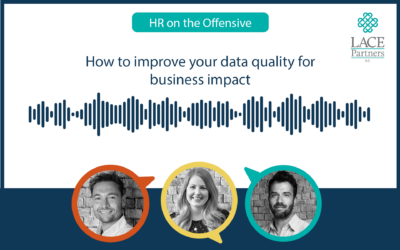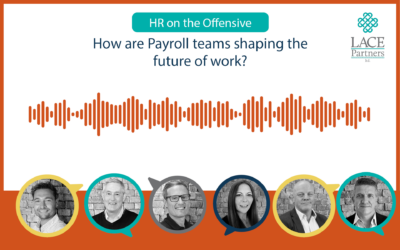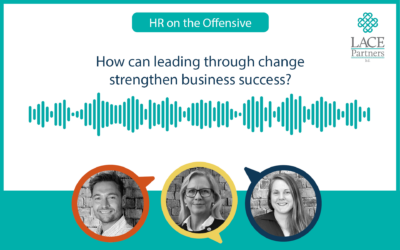In a recent blog that we released focusing on the merit of whether to ‘do-it-yourself’ or leverage the knowledge and capabilities of an application-managed service provider (AMS), we reviewed the merits of both approaches.
We often advise HR teams on there is no one-size-fits-all solution; much will depend on your business requirements, but what is important to note, is that establishing a business-as-usual (BAU) HRIS support model is essential for the success of any HR cloud software implementation and its ongoing support. This ensures the business has the necessary people capability, clearly defined roles, processes, governance framework, and a well-defined roadmap in place, enabling the team to maximise the return on investment from current and future HR products and capabilities.
HR vs. IT: Who should lead the HRIS support model?
Before deciding, several considerations come into play. While IT excels in system development, HR systems are specifically designed to manage complex global HR processes, such as payroll. A deep understanding of how various HR components interact is critical for leveraging an HRIS effectively. Additionally, the sensitive nature of the data within these systems often limits the involvement of external departments, requiring tight control and specialised expertise.
At LACE Partners, we frequently observe that HR typically leads HRIS support, with IT acting as a key stakeholder. This differs from IT’s role in other areas, such as finance systems, which primarily focus on numerical data within predictable frameworks.
The key difference lies in the nature of the systems. Finance systems revolve around numbers, while HR systems are people-centric, handling sensitive personal data, regulatory requirements, and complex processes across the employee lifecycle. For these reasons, HR often leads HRIS product ownership to ensure success. However, IT’s technical skills remain vital to maximising the return on investment of these systems.
If you’re planning to manage your HRIS support model internally, it’s essential to ask:
- Are you sourcing the right skills?
- Are the processes well defined?
- Have you clearly split ownership responsibilities for support attributes between HR and IT?
Bridging the gap between HR and IT
A successful HRIS support model relies on bridging the gap between HR and IT. Here are the six key enablers for a future-proof model that integrates product lifecycle management with user support:

1. Strategy and vision
A shared strategy and vision—backed by leadership advocacy for the HRIS—ensures alignment between HR and IT. This collaboration enhances the system’s user experience, supports evolving business requirements, and enables data-driven decision-making. This integrated approach positions the organisation to respond proactively to future challenges and opportunities.
Questions to consider:
- Does your current HRIS align with your long-term business strategy?
- How well does your HRIS AI integrate with your broader cloud infrastructure and tools?
- How does the AI in your HRIS assist in strategic decision-making for talent acquisition and retention?
- Are you getting the best value for your technology investments, including training and support?
2. Process and governance
Uniting HR and IT with process excellence, a well-defined process and governance framework between IT and HR is crucial for the effective management of the HRIS, ensuring reliability, user adoption, and strategic value. This framework establishes clear roles and responsibilities, enabling strong decision-making and efficient change management to maximise the return on investment.
By fostering collaboration, it ensures reliability, supports continuous improvement and delivers cost efficiencies. Aligned with organisational goals, the framework maximises the return on investment and empowers the organisation to adapt to evolving needs. Through accountability and strategic alignment, it unlocks the full potential of the HRIS, delivering sustained value and innovation over time.
Questions to consider:
- How adaptable is your process and governance model to business changes such as growth, restructuring, acquisitions, or new regulatory requirements? How effectively do you manage the change process to minimise disruption?
- Does your framework support scaling AI capabilities effectively as your organisation grows?
- Do you have a governance model in place to evaluate and approve AI-driven changes to processes?
- How clearly defined is the role of the Global Process Owner (GPO) in your organisation, and do they have the necessary authority to drive process improvements and ensure global alignment?
3. Security, data and compliance
Safeguarding your HRIS through a robust and collaborative security, data, and compliance framework defined by HR and IT is essential to safeguarding organisational data, mitigating risks, and ensuring legal adherence. It builds user trust by guaranteeing that their data is managed securely and responsibly while empowering the organisation to stay ahead of emerging security threats and regulatory changes. This proactive approach ensures the integrity and reliability of the HRIS, fostering confidence among stakeholders and supporting sustainable system performance.
Questions to consider:
- Is your HRIS fully compliant with privacy regulations? Have you experienced any gaps or vulnerabilities in security?
- How does your long-term security and compliance strategy account for emerging technologies, such as artificial intelligence, automation, and cloud computing, and their potential impact on data security and privacy?
- How quickly can you identify, contain, and mitigate any data breaches, and what processes are in place to notify stakeholders and affected individuals in a timely manner?
- How does AI contribute to identifying and mitigating security vulnerabilities in processes?
4. Partnerships
Partnerships for success are built on a robust technology and supplier management framework serving as the foundation for a collaborative IT and HR support model. Strong relationships with technology vendors and suppliers enable organisations to leverage their expertise and strategic insights to align the HRIS roadmap with organisational goals (we also talk about the power of partnerships in this blog here). This approach maximises the return on investment by ensuring the system’s current and future capabilities are optimised to meet evolving business needs, driving innovation and long-term value from the HRIS.
Successful partnerships start with a strong technology and supplier management framework, forming the base for a collaborative IT and HR support model. Building strong relationships with vendors and suppliers allows organisations to use their expertise and insights to align the HRIS roadmap with business goals. This approach optimises the system’s current and future capabilities, maximising return on investment, driving innovation, and delivering long-term value from the HRIS.
Questions to consider:
- How often does your AMS provider:
- Suggest system enhancements, process improvements, or new functionalities?
- Conduct system health checks, audits, or performance reviews to ensure smooth operation?
- Are the services from your AMS provider delivering measurable value compared to their cost?
- Are you paying for services or features you rarely use? Could the scope of services be adjusted for better ROI?
- How well does your provider manage costs for additional requests, such as extended support hours?
- How often do your team members:
- Attend vendor-hosted webinars, product demos, or training sessions to stay updated on new capabilities?
- Use the vendor’s knowledge base, help centre, or technical documentation to troubleshoot issues or explore new features?
5. People capability
Developing functional and technical expertise helps organisations manage systems effectively and build a culture of continuous improvement. Strengthening internal capabilities reduces reliance on external support, empowers teams to innovate, solve challenges proactively, and adapt to changing business needs.
Focusing on upskilling boosts user adoption, enhances the employee experience, and ensures the HRIS delivers long-term value. It also supports strategic HR goals like workforce planning, data-driven decisions, and greater organisational agility. When HR and IT combine their expertise, the HRIS becomes a powerful tool for business success, driving growth and operational excellence.
Questions to consider:
- How do you attract, develop, and retain talent with specialised skills in HRIS management, especially as technology and HR processes become more complex and data-driven?
- How are you aligning your people capability with the future needs of the business, such as talent analytics, remote work support, AI, and DEI initiatives?
- How much do you rely on external vendors, consultants, or third-party support for HRIS maintenance and troubleshooting?
- Are your HR and IT team members equipped with the skills to influence stakeholders and drive change, even when facing resistance?
- Are the teams actively exploring opportunities to leverage automation, AI or analytics to improve HRIS efficiency and effectiveness?
6. Service delivery
Seamless support through a well-defined, tiered service delivery model is the cornerstone of achieving user-centric service excellence through collaboration between IT and HR. By clearly outlining roles and responsibilities, ensuring consistency in delivery standards, and establishing robust issue management processes, this model guarantees high-quality service.
Additionally, it enables data-driven decision-making, fostering continuous improvement and ensuring that services meet evolving user needs while aligning with organisational goals. This structured approach enhances operational efficiency, strengthens stakeholder trust, and drives long-term value from the HRIS.
Questions to consider:
- How user-centric is your service delivery model, and do employees find it easy to access the HRIS support they need through self-service options, live support, chat, or escalation channels?
- How effectively does your service delivery model leverage automation and self-service tools to provide employees with quick resolutions to their HRIS-related needs?
- Are there opportunities to use emerging technologies (e.g., AI chatbots, predictive analytics) to improve the efficiency and personalisation of your service delivery?
- How well are IT and HR collaborating to manage and optimise your HRIS? Are there clear roles, responsibilities, and shared goals between the teams, or do you experience friction or misalignment?
Define what HRIS support model works best for your business
There is no one-size-fits-all solution; a collaborative HRIS support model between IT and HR is essential, as both functions play critical roles in delivering effective services and maximising the return on investment.
For example, IT focuses on managing and optimising cloud infrastructure for the entire organisation, with a strong emphasis on security and system integrations, whilst HR prioritises using cloud services to enhance employee experience, streamline processes, enable change and ensure regulatory compliance.
As a result, it is challenging for the HRIS support model to reside entirely within one function. Instead, it requires a cross-functional support model with a clearly defined RACI (Responsible, Accountable, Consulted, and Informed) framework.
Integrating IT and HR: Why collaboration is key
This cross-functional support model integrates IT’s well-established product ownership framework with the traditional tiered HR service delivery model which creates an effective mechanism to manage day-to-day user support in the business-as-usual environment, while also ensuring that the HRIS product is managed efficiently throughout its lifecycle and delivers optimal return on investment.
However, the true impact of a cross-functional support model relies on the six key enablers of: strategy and vision, process and governance, security, data and compliance, partnerships, people capability, and service delivery.
Depending on where you are on your HRIS journey, you might also find our two Less stress HRIS whitepapers of interest:
Less stress HRIS – Part one: The road to the Cloud
Less stress HRIS – Part two: Beyond basecamp – Eight steps to conquer your HRIS implementation
They focus on the decisions and steps you need to take in choosing your provider, as well as the next stage when you have already selected your technology and are looking to take it to the next level. Alternatively, if you want to talk to us about how we can support you in your process, fill in the form below.






